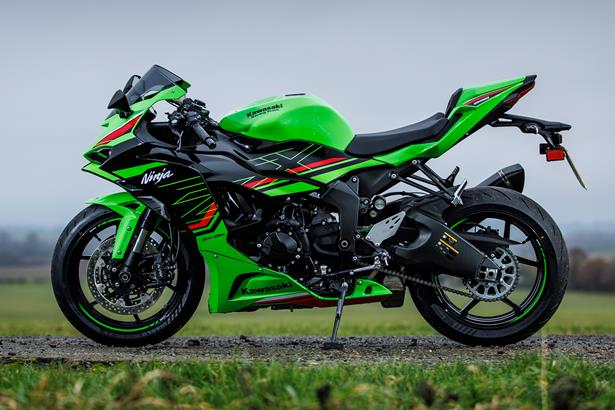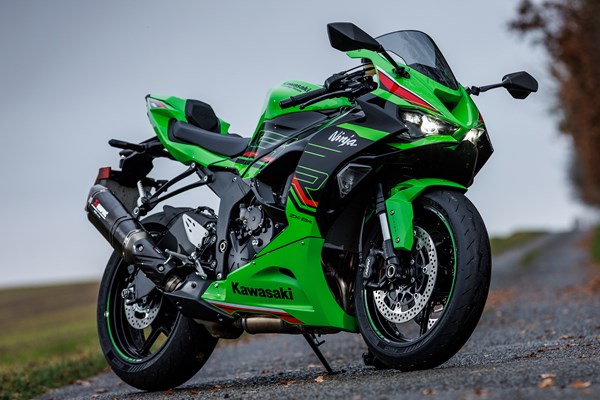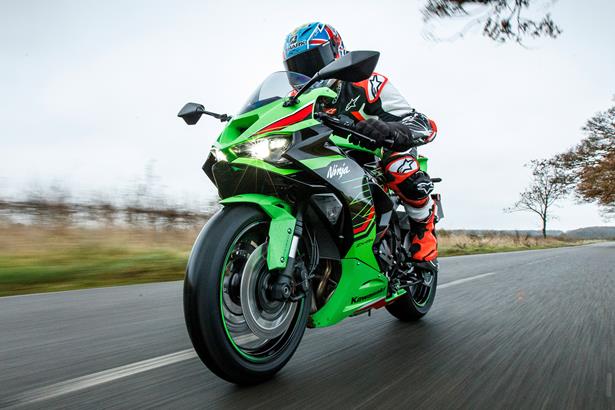Author:Carl Stevens
Published: 21 December 2023
Updated: 21 December 2023
The 600cc(ish) supersport sector used to be one of the most hotly contested segments in motorcycling, with screaming, apex-hunting machines like the Kawasaki ZX-6R fighting it out for supremacy, both on road and track. But thanks to their focussed, single-minded nature, sales dwindled as the average rider grew older. Coupled with with the enforcement of Euro5 (which makes it difficult to build high-revving engines with large valve overlap, which was historically the key to making a competitive 600) the supersport class was as good as dead – or so we thought.
Both Honda’s CBR600RR and Kawasaki’s long-running ZX-6R are returning to UK showrooms in 2024 (both have been on sale in the interim period in other markets with differing emissions standards though), with the Kawasaki being the first to arrive. It’s surprisingly unchanged, given how much stringent the latest standards are: the engine has sacrificed a single bhp at the top end by way of new cams, intake and exhaust headers, which have imbued the 636cc four with more power low down.
There are minor visual changes, with a TFT dash that allows for Bluetooth connectivity replacing the old conventional tacho/LCD info panel, alongside a smart facelift with similarities to both the current ZX-10R and the all-new ZX-4RR too.
Tastes and opinion may differ, but in reality, it hasn’t really moved the game on, and isn’t likely to persuade former 600 buyers to come back from nakeds, adventure bikes, bigger sportsbikes or wherever they’re getting their kicks now.
Sure, it has a little bit more low-down grunt which is something that we’ve all been screaming for from a supersport machine, yet with no changes to the chassis, suspension or comfort, the 2024 ZX-6R is not measurably better on the road than before.
There is the argument it isn’t made for that; it’s built to go fast on track and everything else follows suit, which is why it it’s still has that unflinching focus that was once its key appeal, but time waits for no bike.

Yet, it doesn’t feel slow, and scrutinising both our dyno and speed test figures reveals why. It hits a top speed of ‘only’ 144mph (measured on a datalogger) but does so with ease, and more or less hits a brickwall. We’d expect a 600 to clear 150mph, based on the best figures from the class in its prime about 15 years ago.
Our first thought was that it’s now restricted at high rpm, but cross-referencing the dyno chart reveals it has no issue with revving out in sixth, and makes the same power (115bhp at the rear wheel) as it does in the lower gears, suggesting it’s geared unusually low for a production bike. Gearing is shorter than it might have once been: why, only Kawasaki knows (it may help with meeting noise/emissions standards at fixed speed/rpm, or it could just be to maximise enjoyment), but it’s a welcome change.
It’s a touch revvy at cruising speed, but it’ll hold a higher gear than you might imagine, and it’ll suit the UK’s nadgery parkland circuits really well, too. As an experiment, we tried taking off in sixth. It managed it… an astounding, if useless achievement for a 600…



